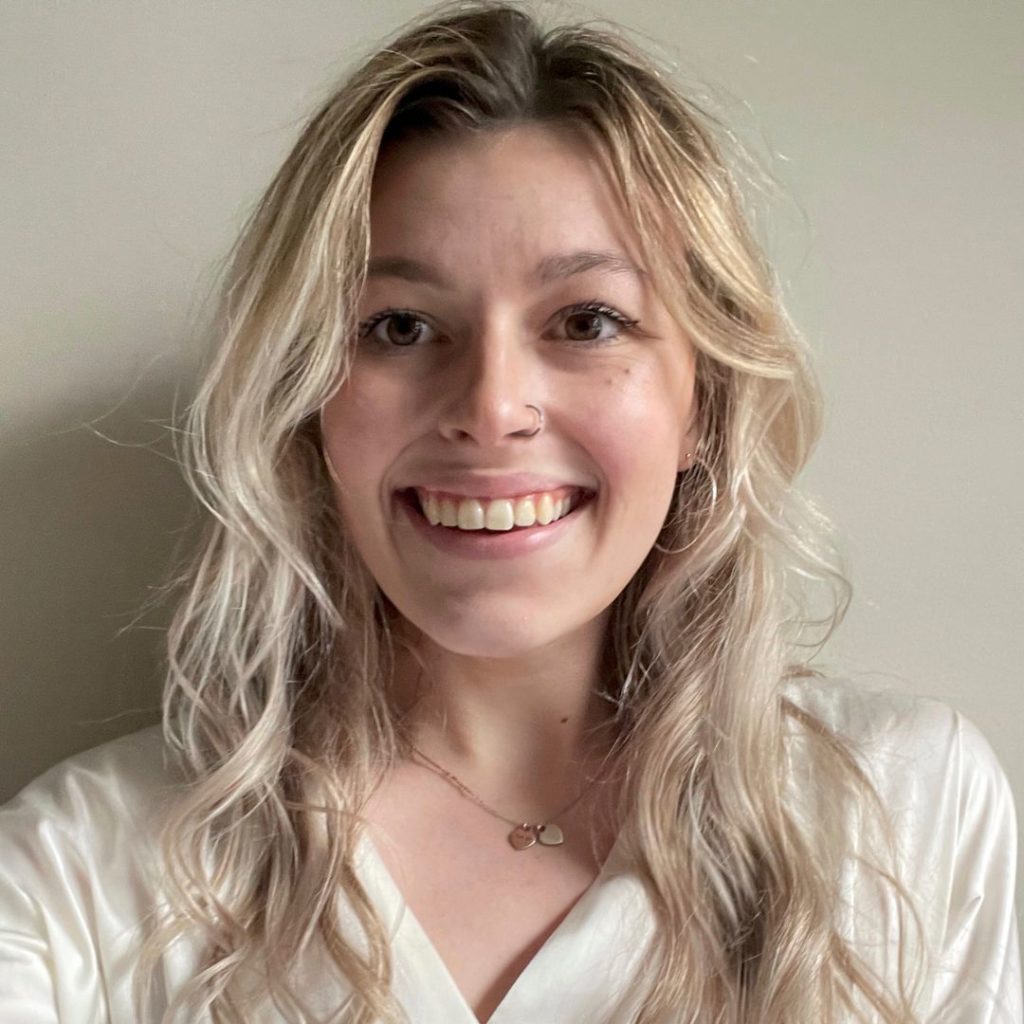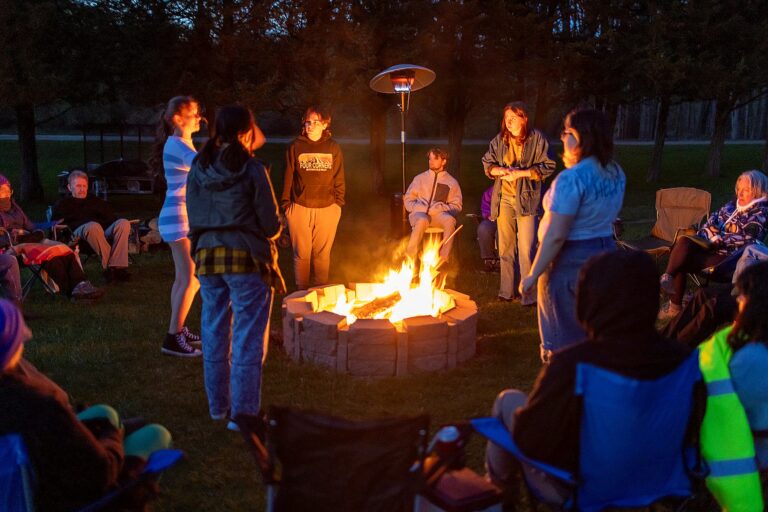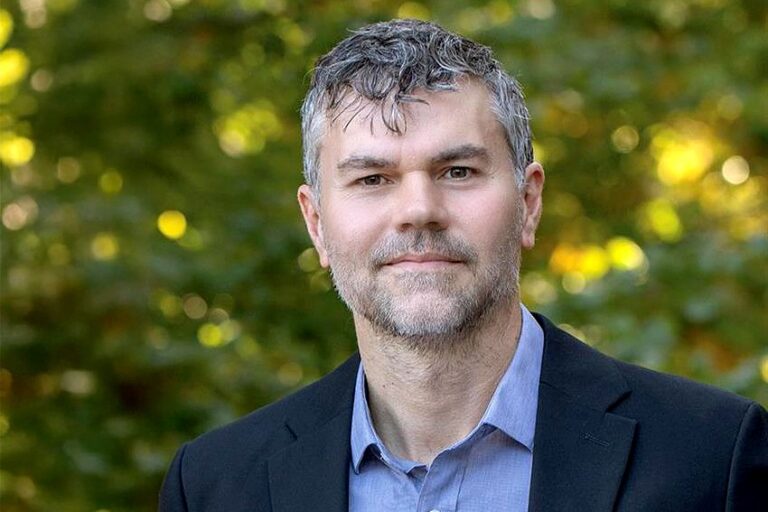The 2022 winning proposals of Michigan State University’s CREATE! Micro-Grant Program recently were announced and represent a variety of disciplines and mediums. Each of the 12 proposals, submitted by MSU students from a range of undergraduate majors, will receive $500 to be used toward the creation of the proposed projects. The goal is to critically engage, through art, with the past, present, or future of the ongoing COVID-19 pandemic.
Offered by MSU’s College of Arts & Letters and facilitated by the Dean’s Arts Advisory Council (DAAC), Divya Victor, Associate Professor of Creative Writing and Transnational Poetry, and Rob Roznowski, Professor of Theatre, founded the program at the height of the pandemic in 2020.

“Unlike most awards given to students at MSU, the CREATE! Micro-Grant Program’s initiative invests in the pure potential of a student’s vision rather than on the end product,” Victor said. “We wanted to offer a source of financial support that sent a clear message to our students: that process matters, that trying matters, that there is room for attempts that fail. We want our students to know that we believe in that because, as artists and writers in the DAAC, we have lived that truth.”
According to Victor, while the first year of proposals “registered the shock and trauma” of the pandemic alongside the violence against the African American community, the second year’s proposals explored the effects of these current events on not only mental health, but on global supply chains as well. Beyond these issues, however, the projects also focused on “positive collectivity” surrounding the Black Lives Matter movement and overall displayed a “greater attention to hope and resilience.”
“Unlike most awards given to students at MSU, the CREATE! Micro-Grant Program’s initiative invests in the pure potential of a student’s vision rather than on the end product.”
Divya Victor, Associate Professor of Creative Writing and Transnational Poetry
“This year, I see a turn towards the care of the individual and a documentation of personal recovery, familial and community structures of support in the face of administrative and institutional failures that will impact this generation of students,” Victor said. “I admire the anger and tenacity in their voice and sense the ferociousness that accompanies them as they shape the future that includes them.”
With support from across the university, dozens of students have had the opportunity to contribute to the many voices responding to current events and issues through creative mediums such as art, dance, film, poetry, and song.
“Thanks to our partner across the mission and the MSU Federal Credit Union, we hope that the DAAC will continue this initiative for as long as students feel the burden of the global pandemic on their training, their fields, and their work,” Victor said. “MSU’s responsibility to serve the artists we are educating should extend beyond the classroom, and I hope the CREATE! Micro-Grant Program can evolve into being a partner for students to express this need to the administration.”
The 2022 CREATE! Micro-Grant online student exhibition will launch later this year during the fall semester and will showcase the 12 student projects.
2022 CREATE! Micro-Grant Award Winners:

Abbey Behan, a senior double major in Studio Art and Packaging, will produce a large-scale oil painting illustrating personal narratives from her time during the lockdown of 2020.
“My work will explore what the pandemic felt like while we were stuck in our homes,” Behan said. “Since we couldn’t go out, we resorted to entertaining ourselves with things like jigsaw puzzles, family walks, and baking bread. A lot of these activities were then posted online and others could relate and share their own things they have been doing or making. These moments kept us together. It gave us a community.”

Esme Bailey, a senior English major with minors in Teaching English to Speakers of Other Languages (TESOL) and American Indian and Indigenous Studies, will create a contemporary interpretation of traditional Anishinaabe beadwork embroidery. The piece will explore how she found her identity as an Anishinaabekwe (Anishinaabe woman), and the ways in which this helped her overcome the mental, emotional, and spiritual challenges she has faced during the COVID-19 pandemic.
“The piece connects directly to myself, my culture, and the importance of togetherness through a variety of symbols and colors,” she said. “The role of art, making, and creating is not just a hobby for Indigenous communities as it is the lifestyle. We make baskets to hold food; we make canoes for transportation; we create beadwork to express ourselves as individuals. So, truly, I believe that the role of art and creating goes hand-in-hand for any culture should you look at it as being more than a simple hobby.”

Ava Ballagh, a junior Social Work major with minors in Theatre and Human Behavior Social Services, will write a play that highlights the impacts of the pandemic on art education told through a Zoom video screen. Focusing on issues such as mental health, Ballagh will utilize the distant nature of online learning to display its ability to hide the truth behind a screen.
“Theatre is a collaboration in the truest sense and one of my favorite aspects of the art form that I love the most. That community and collaboration, at least for me, was taken away to a large degree when we were all stuck in our own houses, only communicating through a computer,” Ballagh said. “Everyone has a different story and I want to tell those stories in a way that shows the pain of mental illness or losing a loved one but also the hope in a renewed sense of community and what I believe is an even stronger bond of performers all around the world.”

Morgan Davis, a sophomore Biochemistry and Molecular Biology major, will create a poem tied to the theme of “home.” She aims to use the medium to explore themes of xenophobia toward Asian people, Black Lives Matter protests, death toll statistics viewing, reproductive rights, and the global decline in mental health.
“I picked poetry as the medium because it leaves room for interpretation. Each person will think of the words and synonyms differently, hopefully relating them to their own COVID experiences and observations,” Davis said. “For a long time, I found shelter in my art. Yet, in this time when things continue to get harder for people of all colors and walks of life, my art has become an outlet for my emotions. Not only fear, but anger, grief for lost loved ones, pain for those that I can’t protect physically, and joy for those who survive.”

Ryan Freund, a sophomore Studio Art major, will use balisong, or butterfly knives, to create a sculpture symbolizing growth and unity amid the pandemic.
“I want to explore the idea that society is intertwined to work together and rely on each other and appreciate the unity and balance of an organized societal relationship in the face of COVID,” Freund said. “In flipping balisong knives, the handles are the elements that keep you safe from the blade. For my piece, I plan to use the handle scales of a balisong to make a sculpture that speaks to the unity of these frameworks by weaving them into one another in a triangular prism.”

Robin Morales, a senior Interdisciplinary Studies major in Social Science Education with a Chicano/Latino Studies Minor, and Brendan Smith, a senior Marketing major, partnered to create an original folk-rock concept album, which will explore the theme of longing through lyrics that touch on depression, personal alienation, longing for justice, peace, and human love.
“We want to share beauty and intense things that make people feel intense experiences,” Smith said. “Making art in difficult times is like telling someone about a massive storm cloud vs. studying meteorology and types of clouds. We want to tell about the shape and feel of the pandemic times so that people looking back can experience more than statistics about cases and anecdotes about shutdowns. Art is useful for taking those “invisible” things and making them ‘visible.’”
Morales added, “We don’t want our music to be about making moral or on-the-nose political statements. We want it to express the hurt and outrage we all feel as human beings in these moments.”

Jacob Nance, a Masters of Music Performance student, and Natalia Warthen, a senior Saxophone Performance major with minors in Arts and Cultural Management and Entrepreneurship and Innovation, will commission seven composers to create original duo works on the saxophone. They plan to give the commissioned artist the freedom to explore whatever themes they wish as an outlet for the creative repression and restraints imposed by the pandemic.
“I witnessed this damage of COVID-19 to the music community firsthand and also recognize that minority groups were hit the hardest. Due to this, our work will focus on commissioning women, LGBTQ+ composers, and composers of color specifically. I want to produce a platform for these groups of people to express themselves in ways they may not have had the time, money, or stability to fully attain in the last three years,” Warthen said. “By the time this project is completed, I hope to have supported a diverse group of artists, while also sharing stories that before and during the pandemic never would have had the opportunity to make it into the world.”

Mate Paa Kwesi Narh, a sophomore Electrical Engineering major with a minor in Computer Science, plans to use videography to express the themes of hope and healing during and after the pandemic, as well as tackle issues such as social stratification and egocentric bias.
“We live in a very sensory world, and some of these experiences can be either at the bright, buoyant end of the spectrum, or the sour, more lackluster extremity,” Kwesi Narh said. “Through the simple tracking shots I can take, angled pieces, and deliberate background sounds, I hope — even if in the smallest way — to share a positive experience that inspires my world through apparitions of sight, sound, taste, smell, and feel.”

Kasey Patrick, a senior double major in English and Psychology, will produce an art piece that will feature three mixed mediums, displaying the time before, during, and after the height of COVID-19 in relation to the social and political outlook of that timeframe.
“Within my work, I want to illustrate the lack of stability that students, such as myself, faced on a daily basis when coping with their mental health, being an essential employee, and not having a proper learning environment,” Patrick said. “My artwork will also explore the social and political concerns of distress, unjust governing, the Black Lives Matter movement, and the class divide found within healthcare and treatment of those who struggled throughout the pandemic.”

Gwen Pinger, a junior Apparel and Textile Design major with a minor in Arts and Cultural Management, plans to create a wooden sculpture similar in design to a windchime “with many long strands of string and glass beads that will twinkle in the sun.” The beads will resemble IV needles in a poignant representation of all the lives lost to COVID-19 in the state of Michigan this year.
“The point of the work is to draw attention to the still very real presence of COVID in Michigan. While restrictions are lifted and, to some, it may seem as though it doesn’t exist anymore, or is not as serious, it’s important to remember that people are still losing their lives to the virus,” Pinger said. “The height of the sculpture is also very intentional. Standing at nearly 7 feet, I want people to be captivated by its beauty and haunted by the imagery of the needles and the thoughts they provoke.”

Eric Saroian, a senior Music Composition and Performance major, is partnering with Jacob Hoffman and Kyle Sodman, students from Purdue University and the Conservatory College of Music in Cincinnati, to create an original composition for a solo bassoon. Accompanying the piece is an animation that synchronizes to the music and depicts a variety of special effects coming from top of the bassoon, such as lasers, smoke, water, etc.
“The piece itself does not intentionally have any social commentary attached to it. The piece exists because I’ve had it stuck in my head for a long time that it would be a cool idea to have a piece where it looked like things came out the top of the bassoon. With that said, I intentionally created the piece for a singular performer,” Saroian said. “COVID-19 has made playing music with other people very difficult, and even though we have moved past the height of the pandemic, its effects on collaborative music making have lingered. The number of contemporary solo bassoon pieces (without piano) is relatively small, and I wish to contribute this exciting and engaging piece to the repertoire that is accessible to those who find themselves isolated.”

Alex Vonhof, a senior Studio Art major, will produce a video that will illustrate the effects of the breath surrounding the anxiety of the pandemic as well as the physical prevention of catching the disease.
“Breath will be a video artwork in which the sound and video of myself breathing is displaced exponentially over time, the displacement triggered by other videos of me breathing and the sound of breath layering over itself,” Vonhof said. “By utilizing modern video technologies, I am able to directly modify video footage of my own face. This makes the work incredibly personal, as the manipulations that will be present in the video are made on my body through the digital medium, a space that we have lived and existed in for the last two years.”



